EVERY borough in London has a higher coronavirus case rate than at least one Tier 3 area, figures show.
The whole capital is currently under Tier 2 restrictions, but figures suggest it is hurtling towards tougher measures.
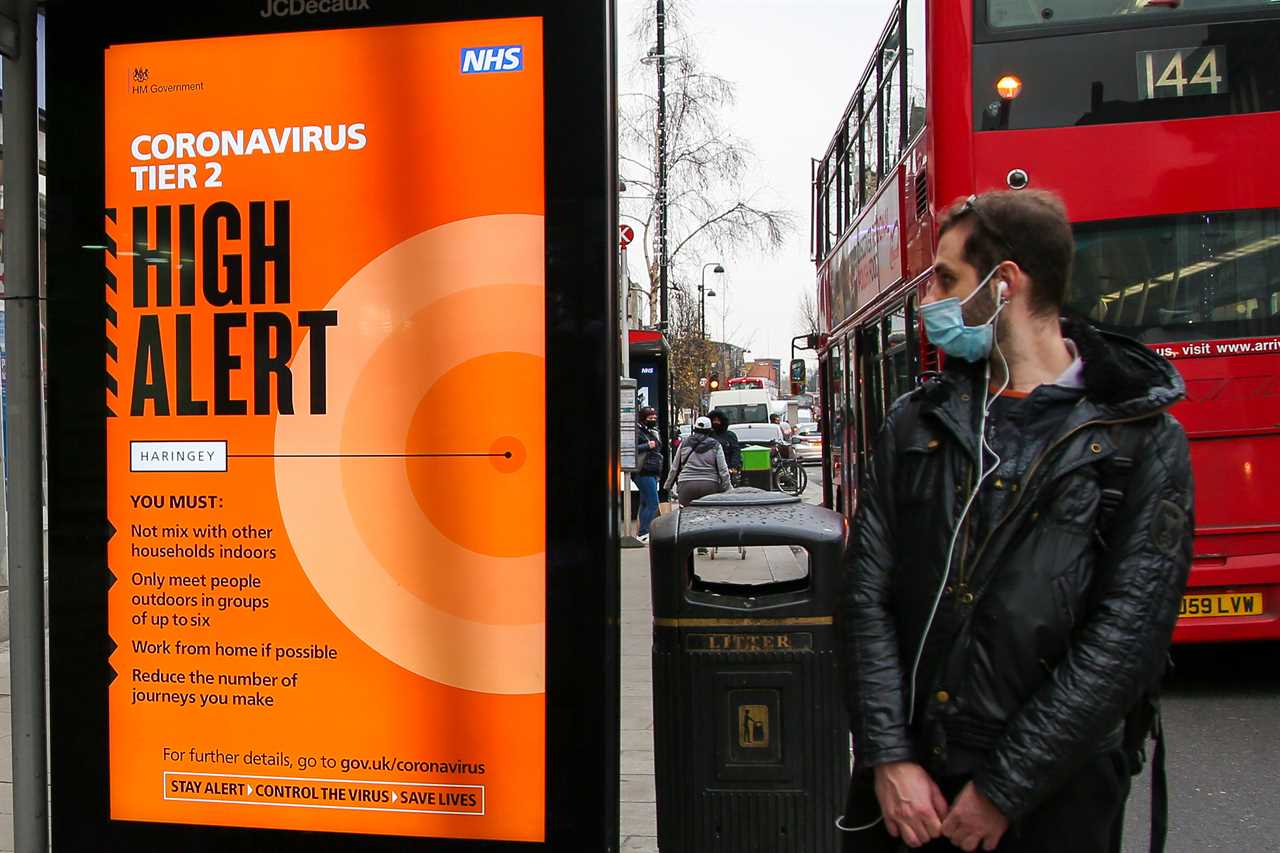
A man wearing face covering looks at ‘Tier 2 High Alert’ poster in north London
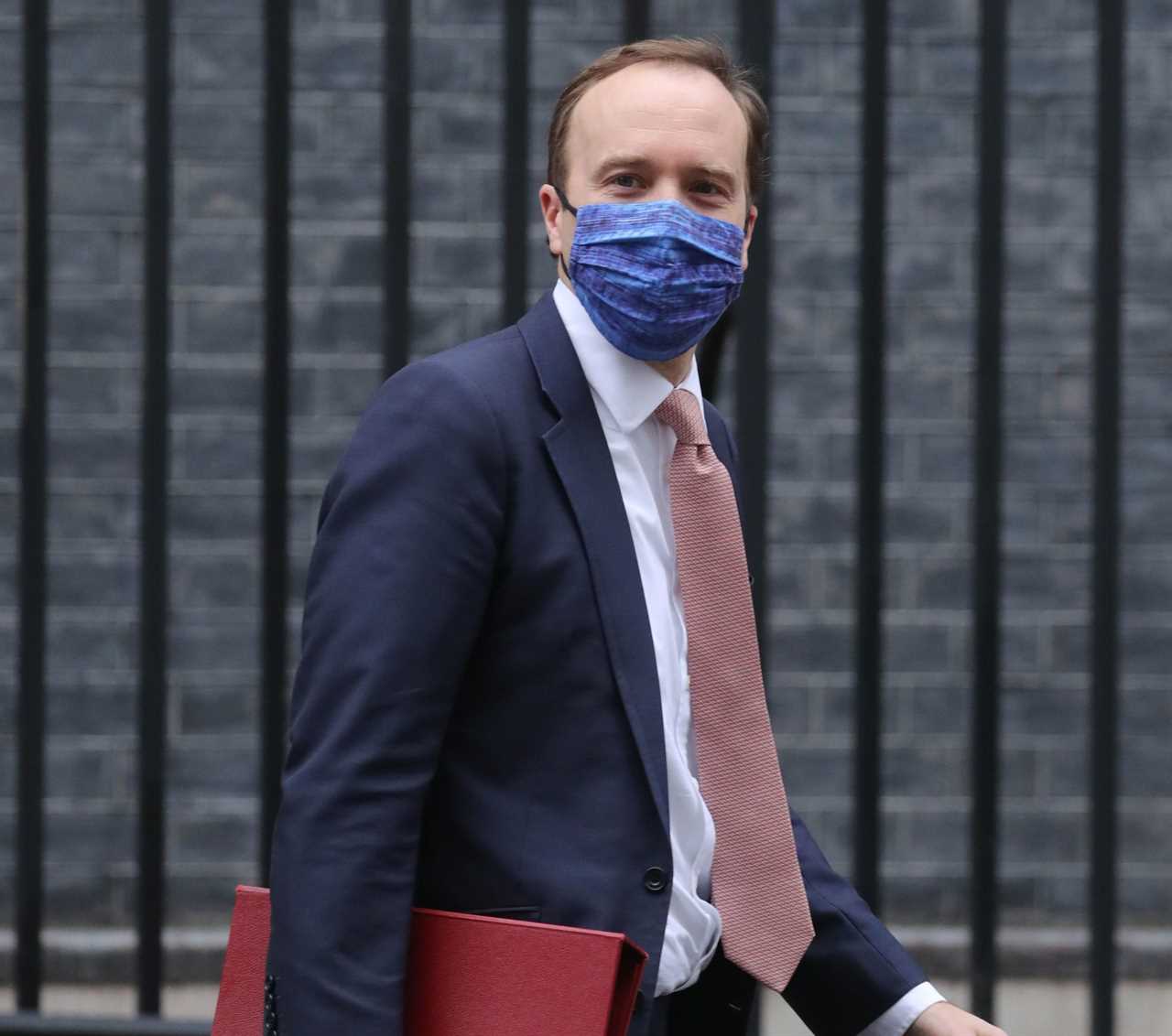
Yesterday the Health Secretary Matt Hancock gave a stern warning to Londoners, dangling the threat of Tier 3 if they don’t abide by the rules
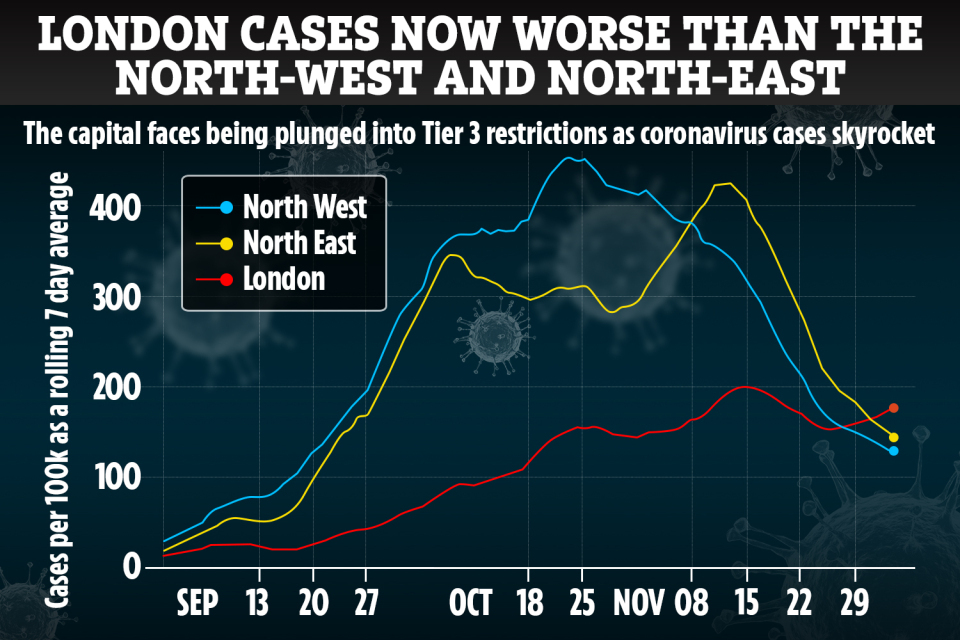
London currently has more cases per 100,000 people than any other region, including the North West and North East
It would mean a miserable lead up to Christmas, with pubs and restaurants closed and a ban on seeing friends and family.
And it could mean around 150,000 people lose their jobs, industry experts warn.
Yesterday the Health Secretary Matt Hancock gave a stern warning to Londoners, dangling the threat of Tier 3 if they don’t abide by the rules.
He told LBC radio: “My message to everybody in London is ‘let’s stick by the rules’ and not push the boundaries of the rules, but rather try to limit the spread of this infection…
“Because the case numbers are going up in parts of London, in parts of Essex, in parts of Kent, and we know what happens when case numbers go up, sadly more people end up in hospital and more people end up dying.”
He reiterated on BBC Radio 4’s Today programme that the Government’s goal is always to protect the NHS, which would mean clamping down on freedoms in the worst scenario.
A public health expert warned the capital needs to be moved into Tier 3 as soon as possible to avoid further infections and Covid-related deaths.
While a spokesman for London Mayor Sadiq Khan added people in the capital must follow the rules or risk being placed into a Tier 3 lockdown.
Havering has a higher infection rate than 104 Tier 3 areas
London currently has more cases per 100,000 people than any other region, including the North West and North East, the Government dashboard shows.
The capital’s overall case rate is 236 cases per 100,000 cases, according to figures from PA.
It’s higher than 22 local authorities in Tier 3, Trending In The News analysis shows.
The data, which comes from Public Health England, represents new cases diagnosed in the seven days to December 5, three days after England left the second national lockdown.
Of 315 local authorities, 32 are in London. But the city is treated as a region when ministers decide the Tier level.
All the boroughs have an infection rate higher than at least one Tier 3 area, but some are worse than dozens.
Of the 32 boroughs of London, six are in the country’s top 10 per cent of areas with the highest infection rates.
Four – Havering, Waltham Forest, Barking and Dagenham and Redbridge are in the 20 Covid-19 hotspots.
Havering diagnosed the most new cases per 100,000 people, therefore its infection rate is currently 379.
This is double what it recorded just one week prior; in the week to November 28, the infection rate of Havering was 287 per 100,000.
Havering has a higher infection rate higher than 104 places under the crippling Tier 3 measures. Only seven Tier 3 areas actually have more cases than Havering per population size.
Waltham Forest (317) and Barking and Dagenham (311) have the 12th and 13th worst infection rates in England.
They are followed closely by Redbridge (299) at 15th place, which has been a Covid-19 “hotspot” consistently throughout the second wave.
Many cities in the North and Midlands are battling the toughest Tier 3 restrictions despite having infection rates far lower than the capital.
Data shows twelve of London’s 32 boroughs have higher infection rates than Birmingham, which is under Tier 3 with a case rate of 191 cases per 100,000, down on the 232 the week prior.
More than half of London (19 boroughs) diagnosed more cases than Manchester (169.8 per 100,000) in the week to December 5.
Local health chiefs and officials in Manchester have begged to be released from tough restrictions that have been in place since summer because they are seeing cases several times lower.
Nearly all London boroughs (28) have a higher case rate than Newcastle-upon-Tyne.
The data suggests that not only does London have a worryingly high infection rate, but that some areas are unjustly in Tier 3.
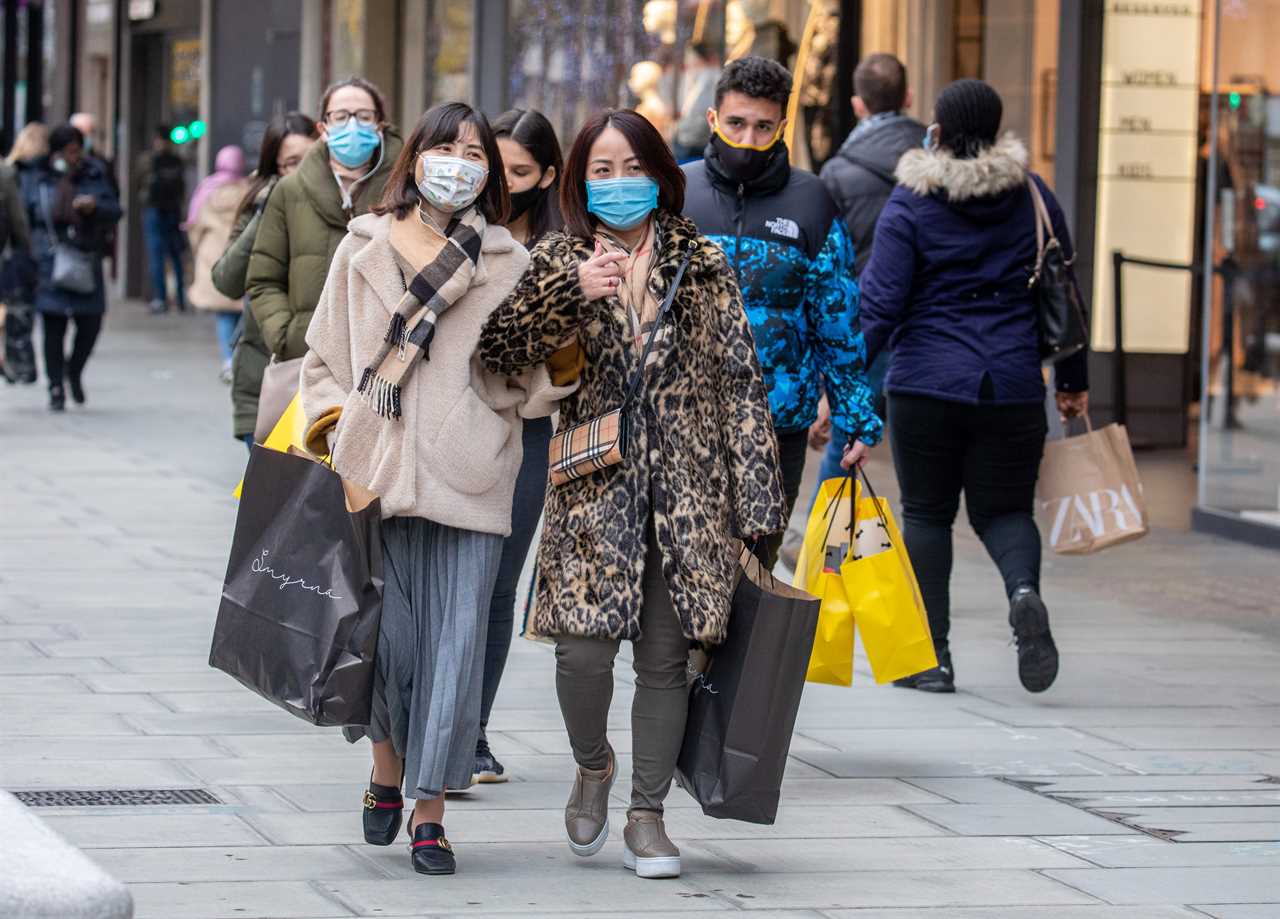 People wearing face masks in London as they shop on Oxford Street
People wearing face masks in London as they shop on Oxford Street
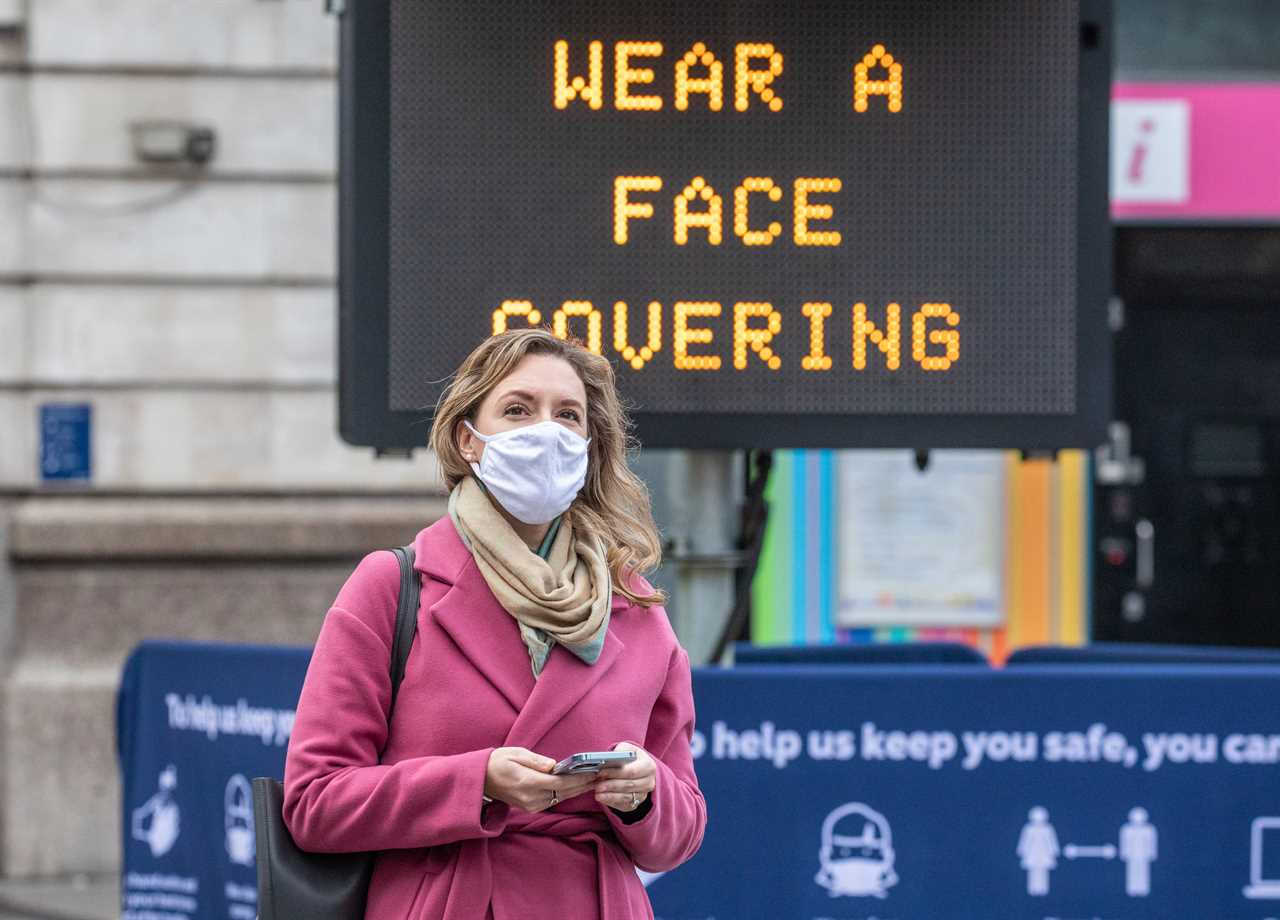
A woman in London wears a face mask
There are only three areas in the “very high alert” level that have case rates below London.
They include Trafford (85 cases per 100,000) and the Derbyshire Dales (72).
Stratford has a staggeringly low rate of 51 cases per 100,000 people. For comparison, the lowest case rate in London is in Richmond-upon-Thames, with 88 cases per 100,000.
Unfortunately areas cannot move down the tiers once their infection rate has fallen.
Tiers are only reviewed every two weeks, which means an authority can be stuck in its tier for days longer than necessary.
The tier system came into place on December 2, meaning the next review will take place on December 16.
Tiers are not based only on cases
Although case rates are subject to change quite quickly depending on how well Covid measures work, hospitalisations and deaths take longer to analyse.
Hospital admissions are one of the five criteria that the Government use when deciding tier levels across England.
It means if too many people are in hospitals in an area for the NHS to cope with, it may be plunged into Tier 3 restrictions even if the case rate is improving.
This was the case for several areas that were forced into Tier 3 on December 2.
In London, 23 out of the capital’s 32 boroughs saw a rise in coronavirus infections in the last week of the lockdown, to December 5.
It may be of a concern, but coronavirus are not flooding hospitals in London.
Daily hospital admissions have barely budged over the past month, after steadily rising in October.
The Government coronavirus dashboard shows that 160 people are being taken into hospital with Covid-19 per day, on average.
At the beginning of November this was around 120 admissions per day.
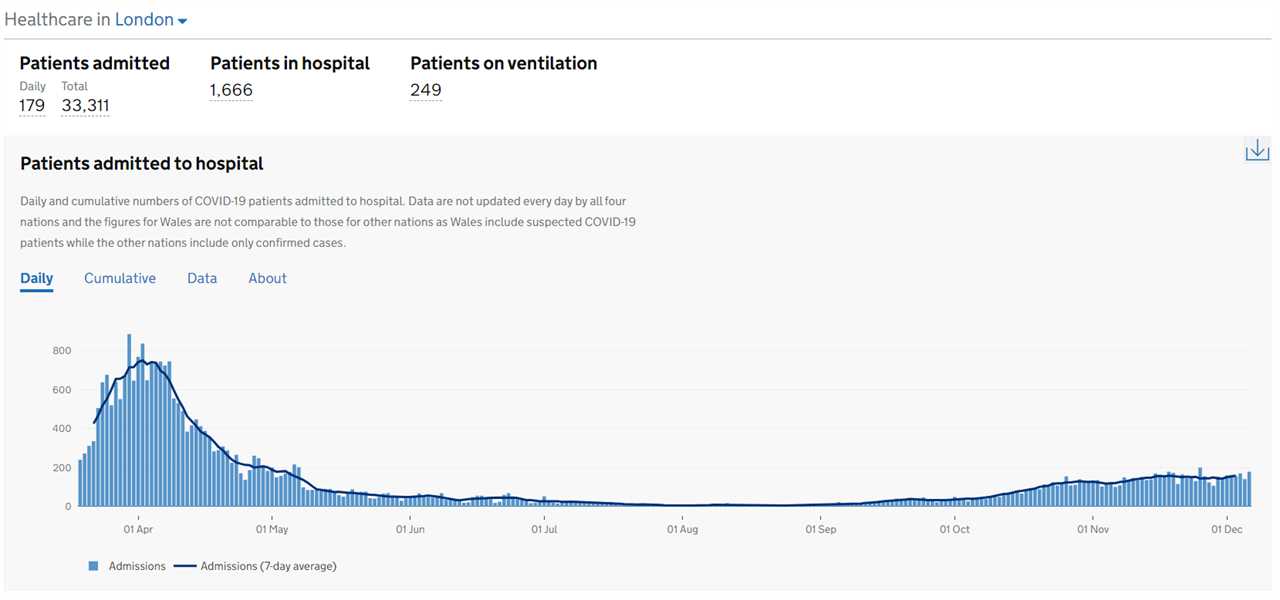 Daily hospital admissions in London have barely budged over the past month, after steadily rising in October
Daily hospital admissions in London have barely budged over the past month, after steadily rising in October
By comparison, in the North West, around 270 people were taken into hospital for severe Covid-19 each day. This is now falling, and is currently at 175.
The capital is recording only 25 deaths per day from Covid-19, which is a fraction of the 205 reported in the darkest days of April.
Although every death is a tragic loss, ministers will weigh these figures up against the cost of shutting down the capital.
“A terrible situation for London”
Professor John Ashton, a former regional director of public health for north-west England, warned action must be taken for the capital quickly.
He told The Telegraph on December 9: “[The government] needs to decide in the next 48 hours whether to move London into tier 3 otherwise they really risk a terrible situation for London, with deaths going up during the Christmas period.”
He also warned: “They might have to go to complete lockdown.”
Mayor of London Sadiq Khan said: “The number of cases in London are rising again and if we don’t all work together now we may face tougher restrictions across the capital.
“Londoners have worked incredibly hard to help bring down the number of cases before, but we must not risk undoing all the sacrifices that have been made by lowering our guard and allowing cases to rise further ahead of Christmas.”
Kate Nicholls, chief exec of UK Hospitality, said closing pubs, restaurants and hotels would deliver a “killer blow” to hundreds of struggling businesses.
She told the Telegraph: “We know that around 800,000 people work in the hospitality sector in London.
“If the Government puts us into Tier 3, we believe the number will drop to 60 per cent or perhaps even lower. That would mean a loss of up to 150,000 more jobs.”
Michael Gove was the most senior minister who backed calls for London to go into Tier 3 straight from the national lockdown.
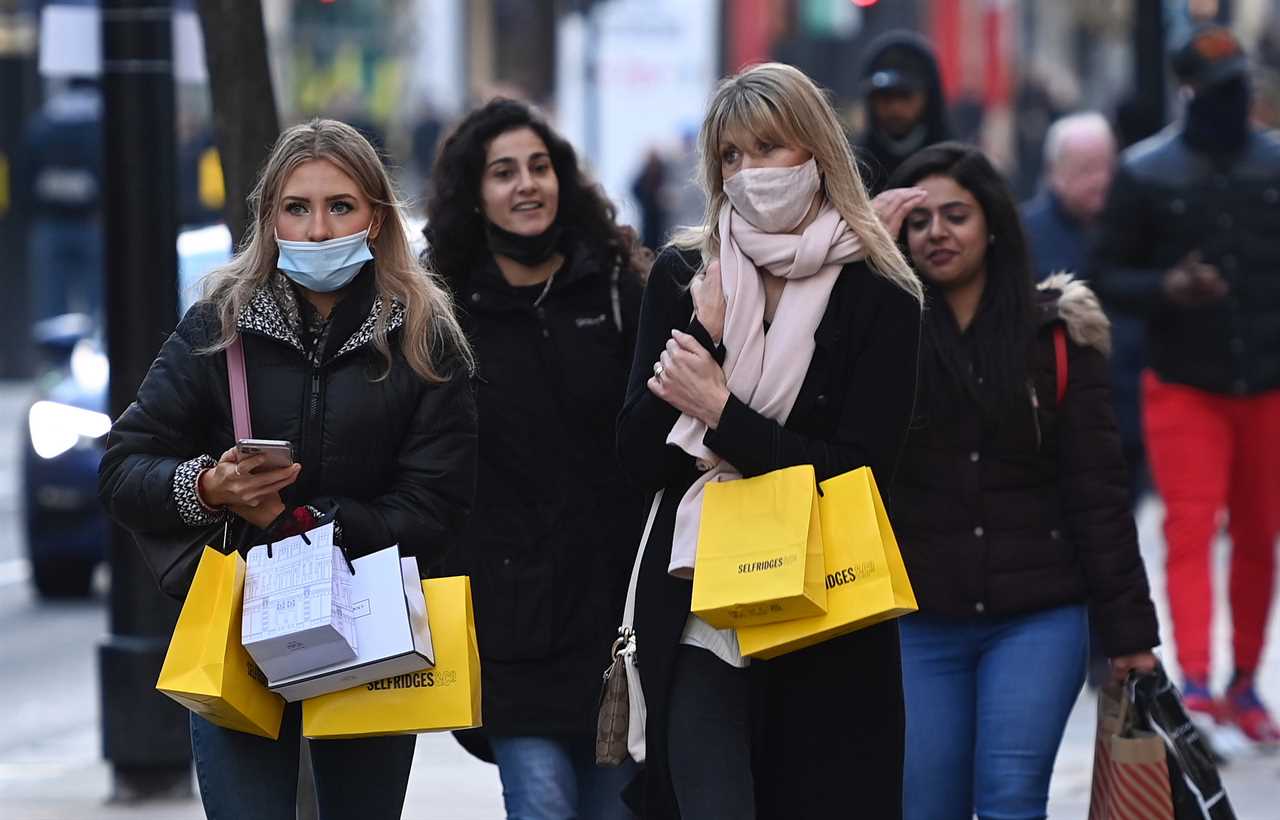
Shoppers at Oxford Street during the first weekend after lockdown in London, 6 December
Several Tory MPs had called for boroughs to be looked at individually when assigning tiers, pointing at parts of Kent that had been slapped with Tier 3 restrictions despite having relatively low cases.
But virologist Dr Stephen Griffin, associate professor at the University of Leeds’ school of medicine, said that would not help to reduce cases in London.
He told Sky News: “In London, you’ve got public transport linking everywhere, you can walk around the corner and be in a different borough and people commute between many boroughs.
“The problem is none of the restrictions prevent people from moving around, so cases are always going to rise.
“We also don’t have track and trace working properly, so having the tiers split by borough would make it very difficult to trace infections.”













